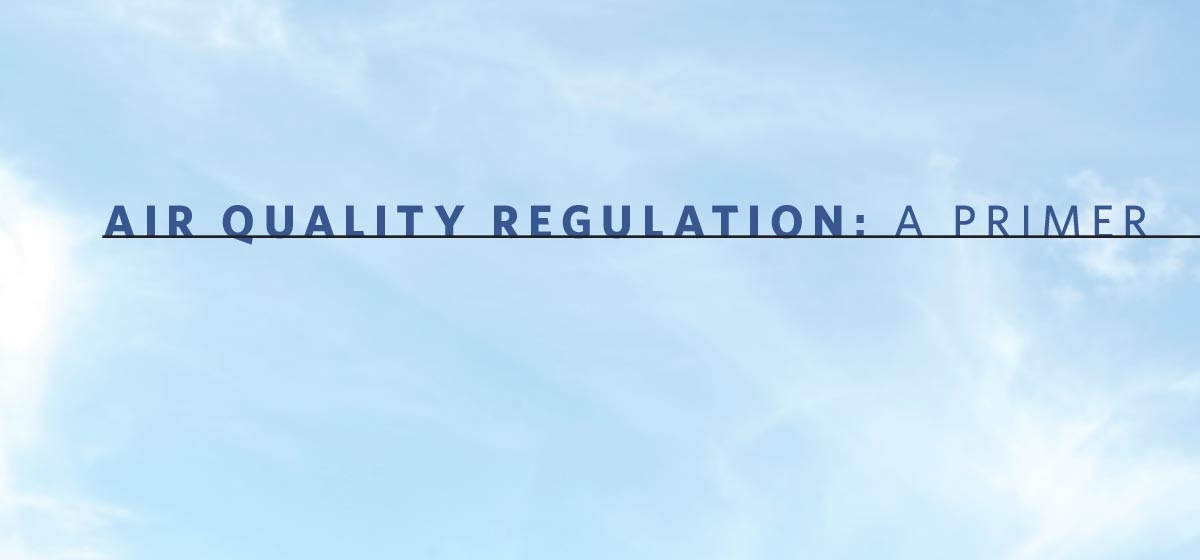Air Quality Regulation: A Primer

Air quality in the United States is governed by a complex regulatory structure that sets pollution limits and authorizes federal, state and local agencies to enforce them. The regulations which agencies enforce vary with the source of pollution, what they emit and the air quality in the region where they are located.
Federal
President Richard Nixon established the U.S. Environmental Protection Agency in 1970 to protect health and air, water and land. The nation’s chief air quality enforcement agency writes and enforces regulations based on federal laws, the most influential being the Clean Air Act.
The EPA reviews national air quality standards periodically, uses scientific evidence to assess their effectiveness and can amend them based on the findings. It can levy fines and sanctions to enforce compliance. And it delegates authority to monitor air quality, administer industrial operating permits, write pollution-control plans and other tasks to state and local agencies.
The EPA provides those agencies with expertise in science, engineering and other fields, It also conducts research and maintains extensive databases, such as an inventory of toxic chemical emissions from industrial sources across the nation.
Budget: $8.1 billion in 2016
Employees: 15,376
Clean Air Act
Congress enacted the Clean Air Act in 1970, which provides the framework for regulating air pollution today. The law allows for setting national standards for individual pollutants and rules for enforcing compliance.
One influential rule, the National Ambient Air Quality Standards, set limits on six common air pollutants: ground-level ozone, particle pollution, sulfur dioxide, lead, nitrogen dioxide and carbon monoxide. The standards are based on levels considered necessary to protect the health of sensitive populations, including children and the elderly.
The law also identifies and regulates 187 air toxics ranging from the carcinogen benzene to coke oven gas; sets industry- specific standards for pollution control technology that major emissions sources must meet; and establishes design and fuel standards for mobile source emissions.
State
The Pennsylvania Department of Environmental Protection is responsible for enforcing state and federal air quality laws. The EPA delegates air monitoring and permitting authority to the DEP except in Allegheny and Philadelphia counties, where local agencies have those responsibilities.
The state’s role includes validating air quality data, coordinating reporting, conducting studies of toxic pollutants, overseeing operating permits regulating emissions from industrial sources, and drafting plans to bring places that violate air quality standards into compliance.
Budget: $697 million in 2016
Employees: 2,697
Allegheny County
The state DEP air quality bureau covers most of the seven-county Pittsburgh Metropolitan Statistical Area. The exception is Allegheny County, where the EPA authorizes the county Health Department to enforce compliance with the Clean Air Act and other air laws.
The responsibilities of the department’s Air Quality Program include maintaining a network of local air monitors; validating and analyzing air data; inspecting emissions sources; issuing operating permits for emissions sources; investigating and enforcing violations; and drafting local regulations and plans to remedy air quality problems.
Budget: $6.37 million in 2016
Employees: 52
Mobile sources
Motor vehicles and other mobile sources are largely regulated by EPA vehicle design and fuel standards. Some states and cities, including Pennsylvania and Pittsburgh, have limited rules for certain emissions, such as diesel exhaust.





